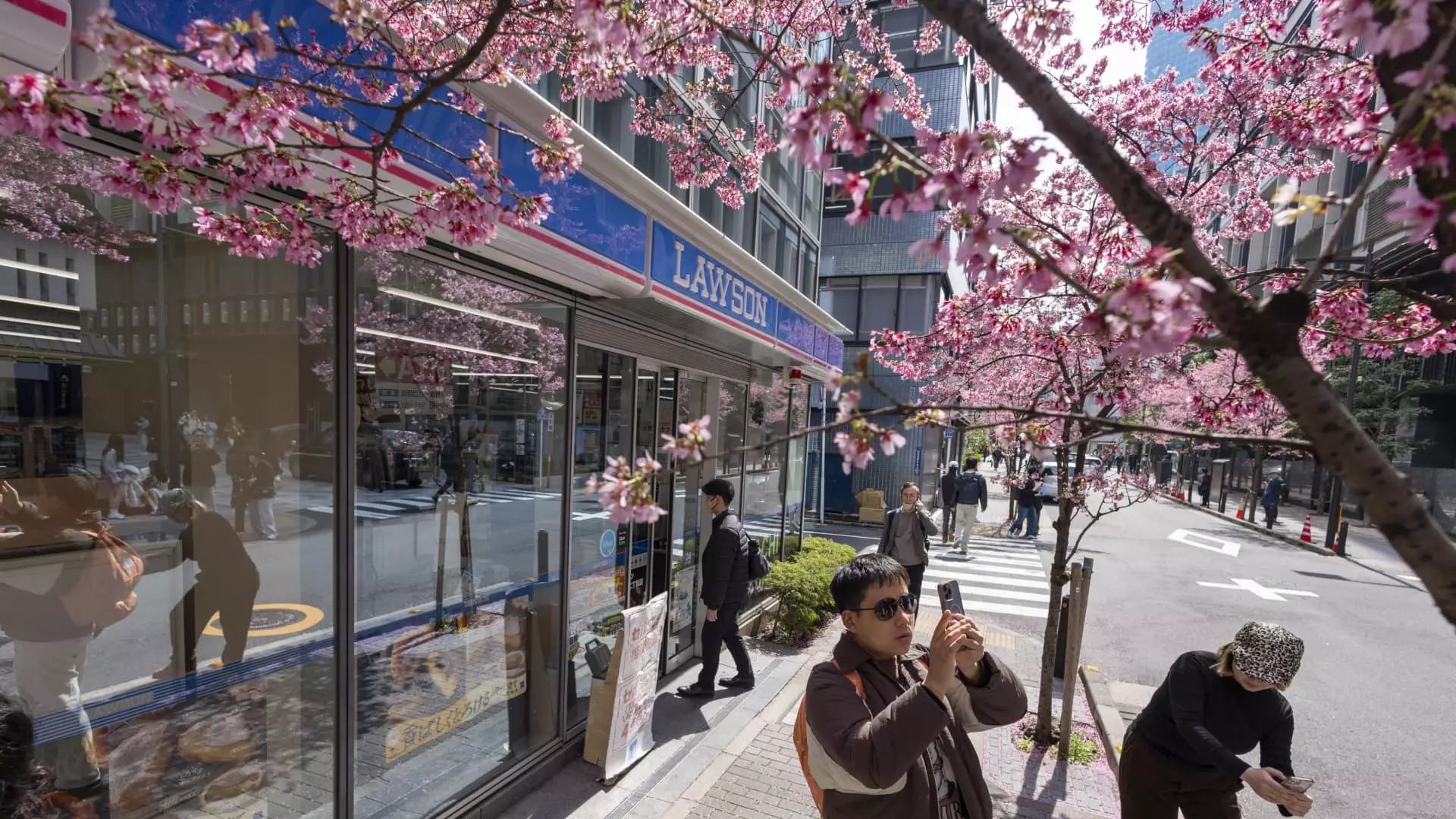Japan’s economy has seen a remarkable resurgence recently, primarily driven by foreign tourism. In recent years, the influx of international visitors has played a vital role in revitalizing various sectors, from retail to hospitality. As the weaker yen made travel to Japan increasingly affordable, a remarkable transformation occurred in the nation’s economic landscape. It’s intriguing to observe such tangible effects from a currency’s valuation, demonstrating that international financial dynamics can significantly alter consumer behavior. The primary question looming is: What happens when the yen strengthens, leading to potentially less favorable conditions for inbound tourism?
The immediate impact of international tourists on Japan’s GDP growth has been striking, contributing a sizeable 1.5% to the full-year GDP growth for 2023. Travelers not only flocked to the islands for their rich cultural heritage and unique experiences but also engaged in considerable spending—pushing Japan’s GDP growth to a historical high. Before this recent surge, tourism contributed a mere 0.1 percentage point to GDP annually between 2010 and 2019, creating a stark contrast to the current scenario. As foreign visitors found themselves able to indulge in shopping, dining, and accommodation at significantly lower costs due to the yen’s decline, the question of sustainability arises as the currency potentially strengthens.
The Yen and Its Implications
The relationship between tourism and the yen is a delicate balancing act. A robust currency may spell trouble for the tourism sector, as it directly affects the affordability of services within Japan for international visitors. As recent analysis suggests, the Bank of Japan’s decision to raise interest rates could lead to an appreciation of the yen against currencies like the U.S. dollar. This scenario poses a significant risk to the booming tourism industry that has flourished during periods of yen weakness. According to experts, a stronger yen might precipitate a notable downturn in international arrivals, negatively impacting Japan’s economic growth trajectory.
However, it’s also critical to recognize that not all is bleak in the tourism industry. Despite the possibility of a decline in inbound tourism, one can argue that other avenues for growth may emerge. For instance, although the number of visitors from China hasn’t yet returned to pre-pandemic levels, policies aimed at stimulating Chinese tourism could bolster the sector again. Beijing’s recent initiatives aimed at boosting domestic consumption may provide a springboard for increased outbound travel from China, opening doors for a new influx of tourists in Japan.
Domestic Resilience Amidst Global Uncertainty
As tourism potentially softens due to the currency dynamics, an intriguing shift may occur toward bolstering domestic consumption. The role of the labor market cannot be overstated; with projections indicating a rise in wages coupled with a strong job market, domestic spending may take center stage in driving economic growth. Recent reports of average wage increases across Japan’s largest labor unions reach new heights, indicating a pivotal shift in economic reliance. This new economic reality suggests that even if tourism loses some momentum, domestic consumption could help stabilize the economic landscape.
Encouragingly, various economists assert that Japan’s economic future may not hinge solely on international tourism. As noted by analysts, the potential for inflationary pressures could be counteracted by wage growth and improved consumer spending habits. Such a foundation may, in fact, herald a new era for Japan, whereby the nation transitions from being excessively reliant on foreign tourists to fostering a more balanced economic approach that includes a robust domestic market.
Strategic Adaptations to Change
Looking forward, Japan may need to be strategic in its approach to foreign tourism. While the country has enjoyed the bounty of tourism revenues, overtourism has begun to rear its ugly head, straining local resources in iconic destinations like Kyoto. This situation creates a pressing need for regional governments to devise policies that responsibly manage tourism traffic while maximizing its benefits. Efforts such as imposing higher taxes on tourists could provide an additional revenue source to aid in this balancing act.
Furthermore, charting a path that leverages both foreign and domestic consumption appears essential for Japan’s long-term economic viability. The existing dynamics showcase a potential evolution of tourism in the face of changing economic realities. While the yen’s strengthening may pose challenges to inbound tourism, it could coincidentally stimulate a renaissance of local consumption and thereby enrich the economy in diverse ways.
Japan’s tourism industry finds itself at a crossroads, navigating challenges posed by currency fluctuations while simultaneously adapting to evolving economic landscapes. This episode serves not only as a testament to the power of economic factors in shaping consumer behavior but also highlights Japan’s resilience and capability to adapt, ensuring sustainable growth in a rapidly changing world.

